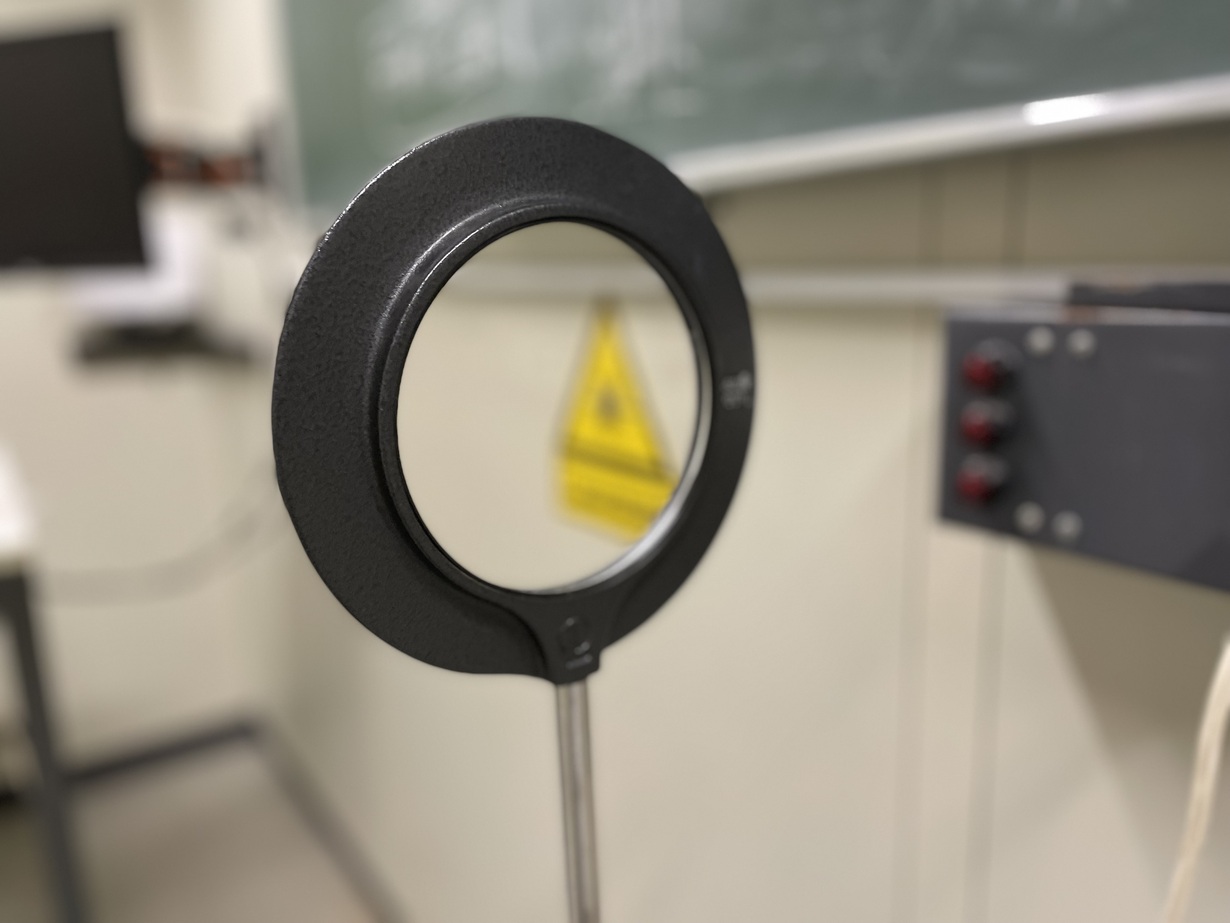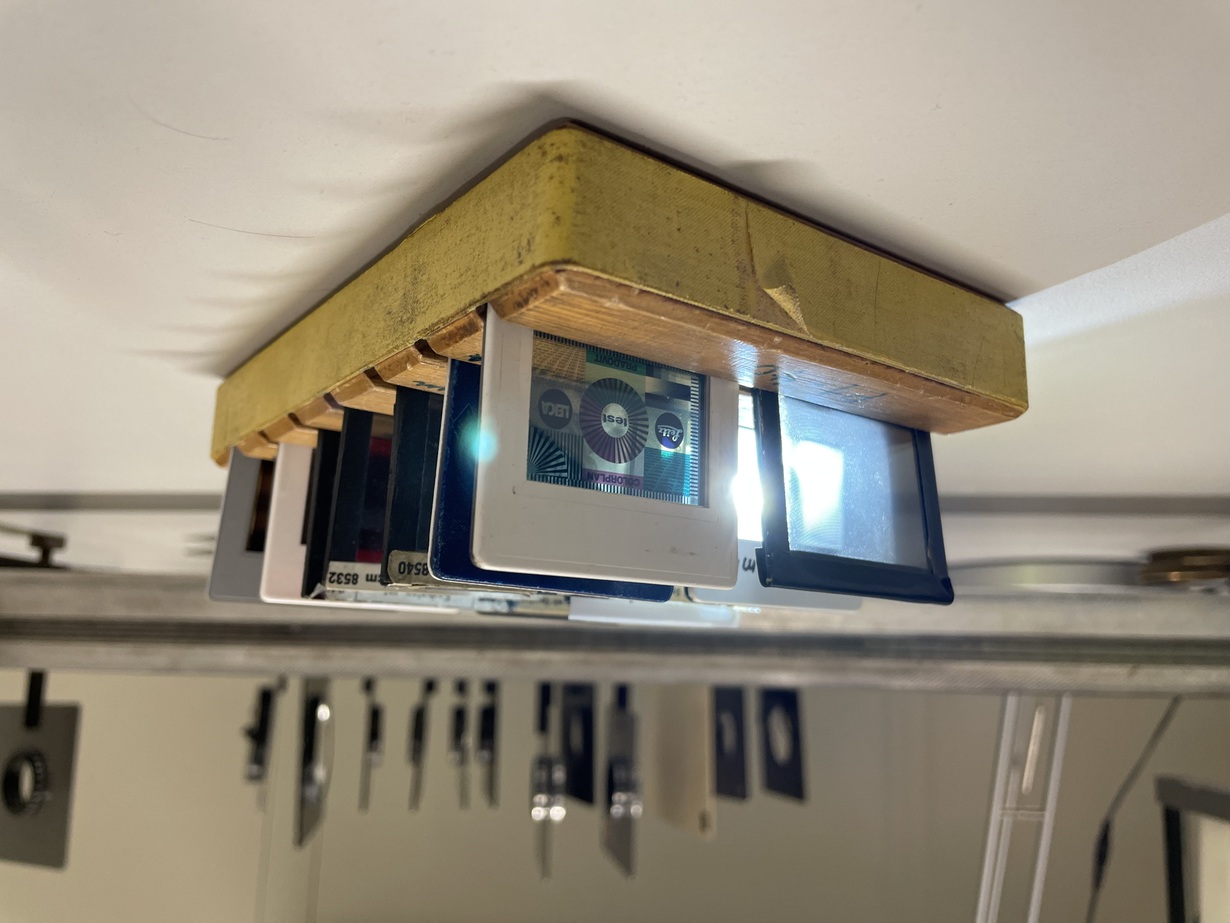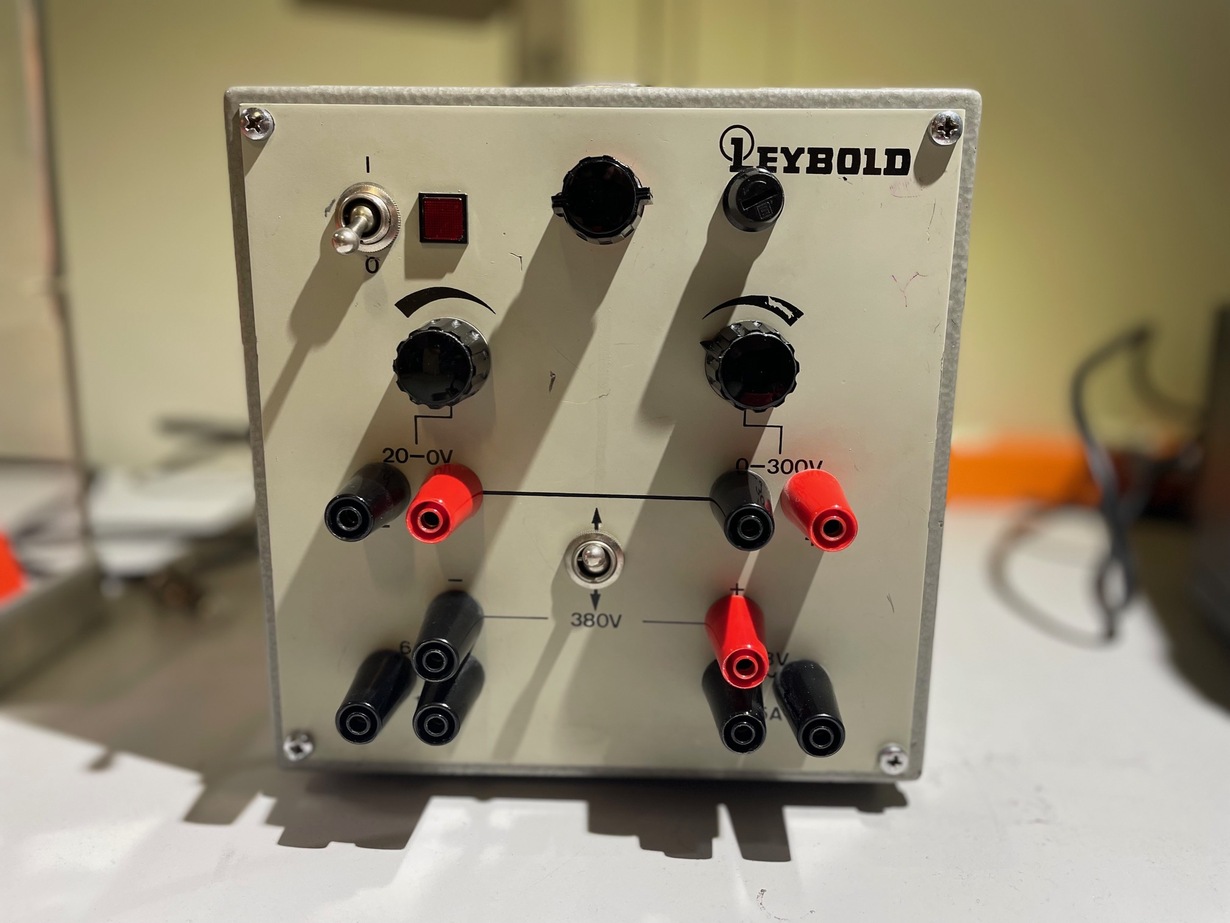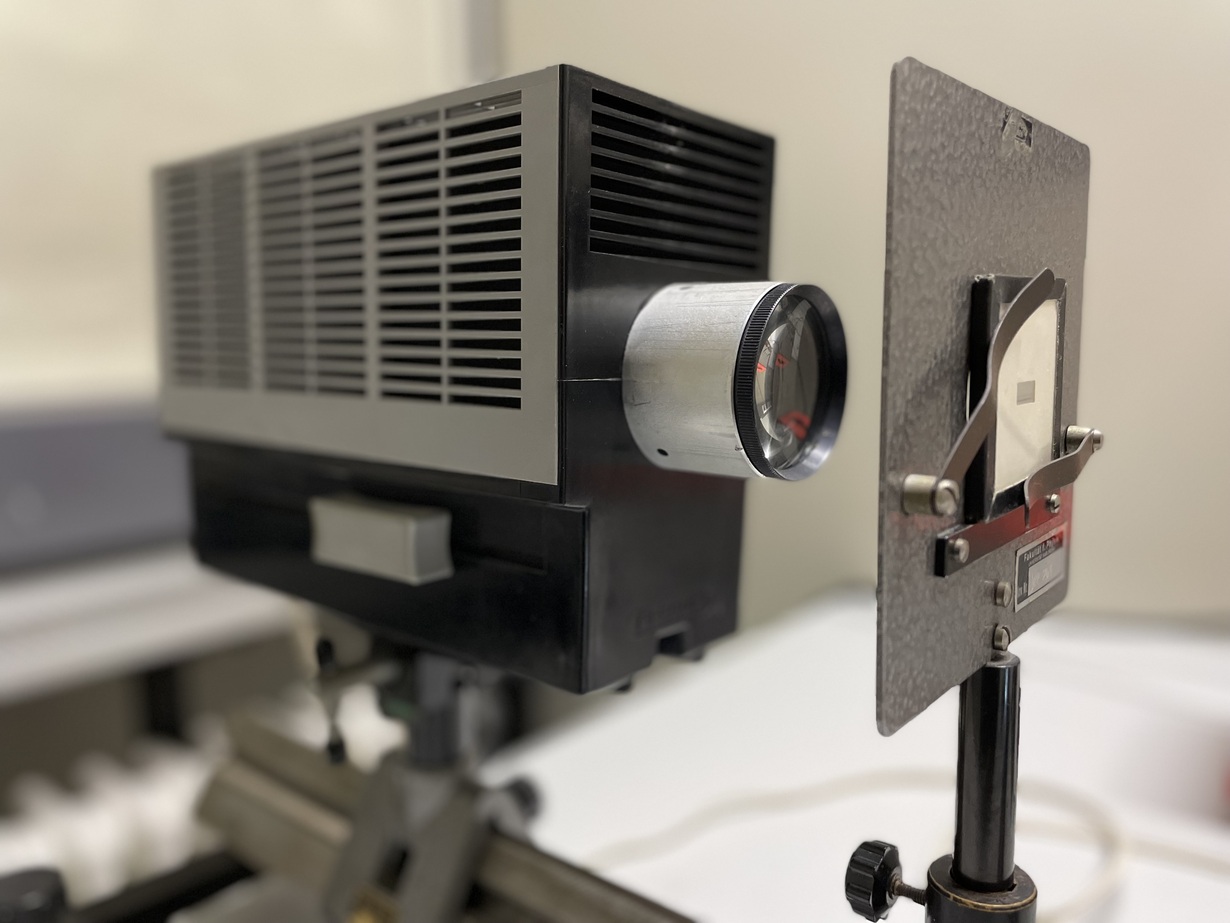Updates
Registration
Registration for the upcoming lab course for students with a minor in physics takes place via the Campus+ system. The preliminary meeting will take place on 23.10.2023 16:30-18:00 in the Otto Lehmann lecture hall. Participation in this preliminary meeting is mandatory.
The Most Important Links
- The instructions for the experiments can be found here.
- Guidelines for good scientific practice can be found here.
- The cover sheet for your evaluations can be found here.
- Instructions for practical measurements can be found here.
- The physical principles for working with alternating current can be found here.
- Notes on evaluating exponential laws can be found here.
- A short introduction to error calculation can be found here.

The website is currently under construction. Therefore not all links are active yet.
Organization
The "Lab course for students with a minor in physics" extends over the period of one semester and includes 20 three-hour experiments. Every week, two experiments are carried out on one experiment afternoon (usually Thursdays) in the time from 13:00-16:00 and 16:00-19:00. Students of Science-Media-Communication (SMC) conduct only 10 experiments on the first five dates of the practical course. In the second half of the semester, you will give a presentation on one of the experiments you have conducted.
Target Groups
The "Lab course for students with a minor in physics" applies to the following degree programmes with a minor in physics:
- Chemistry (B.Sc.),
- Chemical Biology (B.Sc.),
- Medical Technology (B.Sc.),
- Technomathematics (B.Sc.),
- Science-Media-Communication (B.Sc.).
Admission and Registration
The admission to the lab course is bound to the successful participation in the lecture Experimental Physics A and B (with exercises and written exam). If possible, the lab course should not be carried out parallel to the organic chemistry practical course.
Registration takes place via the Campus+ system. The preliminary meeting will take place on 23.10.2023 16:30-18:00 in the Otto Lehmann lecture hall. Participation in this preliminary meeting is compulsory.
Contact
You can reach the organisation of the lab course at the e-mail address apraktikum∂physik.kit.edu. A table of the persons entrusted with the organisation of the lab course can be found below:
| Name | Job Description | Tel. | Office Hours | Room | |
|---|---|---|---|---|---|
| Dr. Hans Jürgen Simonis | Lab Course Director | +49 721 608-24300 | Mo und Do 14:00 - 15:00 (in der vorlesungsfreien Zeit nur nach Vereinbarung) | CN | hj simonis ∂does-not-exist.kit edu |
| Roger Wolf | Lecturer of the lab course | Mi 15:30 - 17:00 | |||
| 4 additional persons visible within KIT only. | |||||
Locations
You will find the experiments of the practical course in the physics flat building:
Building 30.22
Engesserstrasse 7
D-76131 Karlsruhe
The practical course experiments for students with physics as a minor subject are located on the first floor of the building, as shown in the following map. The capacity of the practical course is 84 places.
Experiments
In the following, you will find the most important information about the experiments of the lab course for students with physics as a minor subject and how they are carried out:
Experiment Instructions
| Instructions | Version | Room | Subject Area | Preperation Guide |
|---|---|---|---|---|
| Freier Fall | 03 | 2 | Mechanik | Hilfe |
| Lineare Schwingungen | 05 | 1 | Mechanik | Hilfe |
| Erzwungene Schwingungen | 07 | 1 | Mechanik | Hilfe |
| Gekoppelte Pendel | 06 | 1 | Mechanik | Hilfe |
| Reversionspendel | 04 | 1 | Mechanik | Hilfe |
| Elastizitätsmodul | 09 | 3 | Mechanik | Hilfe |
| Torsionsmodul | 10 | 1 | Mechanik | Hilfe |
| Trägheitsmoment | 20 | 1 | Mechanik | Hilfe |
| Stehende Wellen | 08 | 2 | Mechanik (Wellen) | Hilfe |
| Elektromagnetische Wellen | 13 (08a) | 2 | Mechanik (Wellen) | Hilfe |
| Oberflächenspannung | 11 | 18 | Wärme | Hilfe |
| Innere Reibung | 12 | 18 | Wärme | Hilfe |
| Schmelzwärme von Eis | 23 | 18 | Wärme | Hilfe |
| Dichtebestimmung | 02 | 18 | Wärme | Hilfe |
| Spezifische Wärme von Wasser | 21 | 18 | Wärme | Hilfe |
| Spezifische Wärme fester Stoffe | 22 | 18 | Wärme | Hilfe |
| Bestimmung der Molmasse | 18 | 18 | Wärme | Hilfe |
| Wärmeausdehnung fester Stoffe | 26 | 18 | Wärme | Hilfe |
| Hygrometrie | 30 | 18 | Wärme | Hilfe |
| Dampfdruckkurve | 19 | 18 | Wärme | Hilfe |
| Gasthermometer | 16 | 18 | Wärme | Hilfe |
| Adiabatenexponent von Luft | 17 | 18 | Wärme | Hilfe |
| Spannungsmessung durch Kompensation | 33 | 4 | Elektrizität | Hilfe |
| Wheatstonesche Brücke | 34 | 5 | Elektrizität | Hilfe |
| Magnetisierung | 36 | 5 | Elektrizität | Hilfe |
| Induktion | 37 | 4 | Elektrizität | Hilfe |
| Hochohmwiderstand | 31 | 3 | Elektrizität | Hilfe |
| Wechselstromwiderstand | 40 | 6 | Elektrizität | Hilfe |
| Halbleiterwiderstand | 29 | 6 | Elektrizität | Hilfe |
| Transformator | 39 | 6 | Elektrizität | Hilfe |
| Dielektrizitätskonstante fester Stoffe | 42 | 6 | Elektrizität | Hilfe |
| Elektrischer Schwingkreis | 45 | 6 | Elektrizität | Hilfe |
| Oszilloskop | 41 | 3 | Messtechnik | Hilfe |
| Spiegelgalvanometer | 38 | 4 | Messtechnik | Hilfe |
| Stroboskop | 14 | 5 | Messtechnik | Hilfe |
| Brennweite dünner Linsen | 46 | 2 | Optik | Hilfe |
| Linsensystem | 47 | 2 | Optik | Hilfe |
| Mikroskop | 48 | 3 | Optik | Hilfe |
| Newtonsche Ringe | 50 | 3 | Optik | Hilfe |
| Auflösungsvermögen | 58 | 3 | Optik | Hilfe |
| Prismenspektrometer | 52 | 4 | Optik | Hilfe |
| Gitterspektrometrie | 53 | 4 | Optik | Hilfe |
| Polarisation durch Reflexion | 59 | 5 | Optik | Hilfe |
| Polarimeter | 54 | 5 | Optik | Hilfe |
| Refraktometer | 49 | 2 | Optik | Hilfe |
| Dispersionskurve eines Prismas | 51 | 4 | Optik | Hilfe |
| Beugung am Spalt | 60 | 9 | Optik | Hilfe |
| e/m-Bestimmung | 55 | 5 | Atomphysik | Hilfe |
| Elektrolyse (e-Bestimmung) | 32 | 6 | Atomphysik | Hilfe |
| Absorption von Gammastrahlung | 61 | Atomphysik | Hilfe |

Behavior in the lab rooms, access, safety equipment, behavior in emergency situations, emergency numbers.
link
Guidelines for safe handling of evacuated containers, electricity, lasers, as well as radioactive or hazardous chemical substances.
link
Guidelines on Integrity and Good Scientific Practice.
linkPractical Hints
Group Allocations
The experiments are conducted in groups of two students each. The allocation of the groups is initially provisional, based on the registration data. It will be finalised after the preliminary discussion of the practical course and can then be viewed on the wall plans on the 1st floor of Building 30.22. The preliminary discussion of the lab course takes place on the first lecture day of each semester. The exact date can be found in the current course catalogue and under the tab Updates. The assigned test dates are binding. For organisational reasons, there is only one date (at the end of the regular lab dates) to make up for missed experiments.
Preparation for the Experiments
Each experiment starts at your home, with thorough preparation using the relevant experiment instructions and the literature given there. Note that the planned experiments may differ in details from the experiments described in the books given.
Important aspects of the preparation of an experiment are to get a clear picture of the underlying physics and to transfer the formulas needed for the evaluation into the protocol booklet. You will find literature excerpts for (almost) all experiments under the tab About the experiments. It is also helpful to read through the following notes before the first day of the experiment:
- Notes on practical measurement,
- Physical basics of the alternating current experiments,
- Notes on the evaluation of exponential laws,
- A short introduction to error calculation.
Please note that if you are not prepared, your supervisor may exclude you from carrying out an experiment.
Experimentation
On the day of the experiment, the measurements are carried out, clearly recorded and carefully evaluated. During the execution and evaluation of each experiment, you will be supported by a supervisor who will also ensure compliance with any applicable safety regulations.
Experimental protocol
For your experimental protocol you need a protocol booklet in DIN A4 format. For handing in, stick the completely filled in test sheet on the first page of this booklet. Please note that reliable scientific data collection requires careful experimentation and a minimum of discipline when recording.
A protocol should be written in biros if possible, but not in pencil. If you have made a mistake, cross out the relevant text passage and repeat the measurement or calculation. With the help of your protocol, the experiment carried out should be reproducible, i.e. an expert should be able to carry out the experiment with the help of your protocol and confirm your measured values within the measurement uncertainties.
Your protocol should therefore contain the following information:
- A brief description of the task and the experimental set-up with sketch, including the designations of the measuring instruments and the selected measuring ranges.
- All measured data! This is expediently done in tabular form. Make sure to label the columns/rows of the table, e.g. with the given physical quantity and corresponding unit(!).
- The evaluation and the results with discussion of errors. If the results are to be presented graphically, make sure that the scaling and axis labels are appropriate.
- Finally, the result of the measurement should be assessed in a summarising comment.
The use of notebooks in the lab course is expressly permitted. In such cases, print out the parts of the protocol made with the notebook and glue them into the notebook. To ensure that the learning objectives of the lab course are maintained when using notebooks, either both students in a lab course group should use a notebook independently of each other, or the second intern should prepare a handwritten protocol. Using only one notebook and printing out the results twice is not in the spirit of the lab courses.
Successful Participation in the Lab Course
Your supervisor will give you a certificate for the successful completion of an experiment. After 20 certificates, you will receive recognition for successful participation in the internship from Ms. Kurali. If you have any questions or problems, the contact persons of the lab course organisation will be happy to help you.
